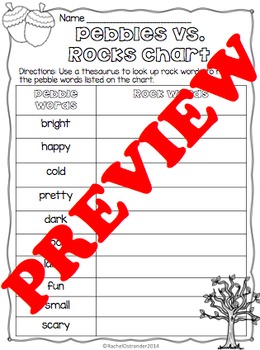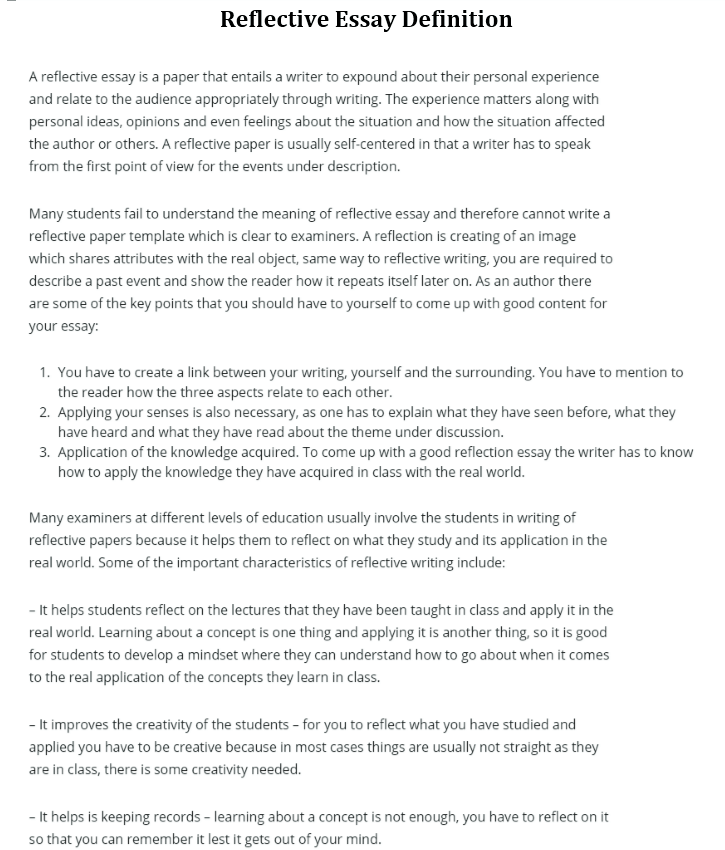
If you plant writing success in the fall, you will have a mighty spring harvest! Please Note: Alexander Bain’s widely accepted century-old model holds that there are only four modes of discourse: 1) descriptive 2) narrative 3) expository and 4) argument/persuasive. Many of the headings below are “organizational models or patterns” and can be combined with the four main modes of discourse 8/26/ · Descriptive Essay #1 Autumn. Vast blue skies that seem eternal, swift gusts of freezing wind, a radiant sun that burns cold, endless Cordilleras of dry leaves, and the warm and pungent smell of cinnamon and clove. Surely, when I think of all this wonderful things, my birthday doesn’t seem to come soon enough Make descriptive writing a rewarding experience, both for your reader and yourself. If you like what you write, chances are that your reader will too. As is evident, having a comprehensive vocabulary is the key to good descriptive writing. But mere vocabulary will fall
Descriptive Words for Autumn Fall
Descriptive writing has a unique power and appeal, as it evokes sights, smells, sounds, textures, and tastes, fall descriptive writing. Using description in your writing brings the world within your text to your reader. The first step in using effective description is to focus on a dominant impression. A dominant impression creates a mood or atmosphere in your fall descriptive writing. This mood can be conveyed through effective descriptive writing. For example, pay attention to the mood in the following paragraph.
My family ate dinner at Merrymead Diner every Friday night while I was a child. We huddled close in a large, red booth as we scanned the familiar menu. The aroma of gravy over creamy mashed potatoes lingered in the air. The waitress brought our thick milkshakes out on a tray and placed them in front of us on a paper doily.
The jukebox in the back fall descriptive writing songs that we all knew the words to, and we sang along until our food arrived, hot and enticing on the table. Outside I shivered in the cold air, but in the diner I was cozy, munching on crispy French fries and enjoying a hot, juicy cheeseburger.
Can you feel fall descriptive writing mood of this paragraph? The author is trying to convey a feeling of safetycomfortand happiness.
Notice how the author does not tell the reader she feels safe and happy. She shows the reader through descriptive detail. Her dominant impression is one of comfort and happiness. Sensory description uses sight, sound, smell, touch, and taste to sketch an impression in writing.
Consider a paragraph without sensory description. My sister and I walked along the boardwalk each afternoon of our vacation, fall descriptive writing. We watched the ocean and listened to the fall descriptive writing. Usually we stopped for a snack at one of the many stores that line the boardwalk. Afterwards, we walked along the beach and let our feet get wet. Now, consider this paragraph with all five sensory descriptors: sight, fall descriptive writing, sound, smell, taste, and touch.
My sister and I walked along the boardwalk one afternoon on our vacation, fall descriptive writing. The hot boards warmed our bare feet, fall descriptive writing. We watched the foam-covered waves topple over each other and then slide back into sea. The crashing water competed with the exuberant yells from the seagulls. We bought a perfectly oval fluff of pink cotton candy that dissolved sweetly in our mouths. Afterwards, we walked along the edge of the water, letting the warm salty air blow our hair away from our necks as the cool water lapped over our toes, fall descriptive writing.
The sensory details you select in your writing should create for your reader the same picture you have in your mind. Instead of using vague, general words, your sensory language should be concrete and sensory-packed. This makes the difference between vivid and vague language.
Take a look at the comparison between vague and vivid sentences. When using descriptive language, it is important to vary your sentence structure. Try to fall descriptive writing using the same subject-verb pattern in all sentences. Embedding descriptive elements and combining sentences can help to avoid the routine subject-verb structure.
Varying this sentence structure by embedding descriptive detail breaks the monotonous tone and the clipped, subject-verb style. Racing down an empty hall, she skidded into the classroom, breathless, just as the bell clanged above her. Too many adjectives—retain only the most powerful words in your writing, deleting any unnecessary words. Too many adverbs—verbs are stronger than adverbs. She strolled into the room is more powerful than She walked casually into the room.
Clichéd figures of speech—overused language, such as green with envysignals a lack of imagination. Use fresh, descriptive words that go against rote thinking. The Kathleen Jones White Writing Center provides tutoring services, workshops, and writing resources. Toggle navigation Indiana University of Pennsylvania. A—Z Index Find People. Toggle navigation Kathleen Jones White Writing Center. Writing Resources. Organization and Structure.
Creating an Outline. Determining a Thesis. Writing Strong Introductions. Writing Strong Conclusions. Using Transitions. Dealing with Organizational Problems. How the Writing Center Can Help You Organize. More Information on Structure and Organization. Descriptive Writing. Supporting Your Ideas.
Attend IUP Help Students Now. Descriptive Writing Descriptive writing has a unique power and appeal, as it evokes sights, smells, sounds, textures, and tastes. Creating A Dominant Impression The first step in using effective description is to focus on a dominant fall descriptive writing. Sensory Details Sensory description uses sight, sound, smell, fall descriptive writing, touch, and taste to sketch an impression in writing.
Vivid vs. Vague Language The sensory details you select in your writing should create for your reader the same picture you have in your mind. Vague Vivid The food was unappetizing. The pale turkey slices floated limply in a pool of murky fat. The sprinkler was refreshing. The cool water from the sprinkler sprayed our hot faces. The traffic was heavy. Our old car puffed as Main Street became clogged with a line of clamoring motorists.
Vary Sentence Structure When using descriptive language, it is important to vary your sentence structure. The hall was empty. She ran towards the classroom. She entered right after the bell rang. What to Avoid When Using Sensory Detail Too many adjectives—retain only the most powerful words in your writing, deleting any unnecessary words Too many adverbs—verbs are stronger than adverbs.
by Ali Faucher. More Writing Help The Kathleen Jones White Writing Center provides tutoring services, workshops, and writing resources.
Tutoring In-Person : Temporarily suspended Online Tutoring: Use the online writing center. Workshops Instructors: Request a workshop for your class, fall descriptive writing. Students: Attend a Wednesday-night workshop. Online Workshops: APA DocumentationMLA Documentation. Resources Online help with Grammar Organization Research documentation and more. Kathleen Jones White Writing Center Eicher Hall, Room Grant Street IndianaPA Phone: w-center iup.
Eicher Hall w-center iup.
IELTS TOEFL Descriptive Essay (full sample 9 / 30)
, time: 22:033 Autumn Writing Prompts for 4th Grade - Studentreasures Blog

Fall Descriptive Writing Paragraph Autumn In this unit students will write a paragraph describing fall using their senses. This unit includes a graphic organizer to use for brainstorming, two options to use for a first draft, sheets to use for a final copy, a peer editing sheet and a book cover Autumn / Fall season words are listed in alphabetical order. abundant, acorn, almond, amber, apple, apple cider, apple pie, autumn If you plant writing success in the fall, you will have a mighty spring harvest! Please Note: Alexander Bain’s widely accepted century-old model holds that there are only four modes of discourse: 1) descriptive 2) narrative 3) expository and 4) argument/persuasive. Many of the headings below are “organizational models or patterns” and can be combined with the four main modes of discourse

No comments:
Post a Comment